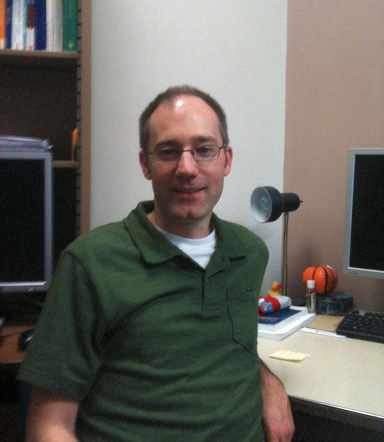Osteoarthritis, a degenerative joint disease, is the most common type of arthritis. According to the Centers for Disease Control and Prevention, an estimated 27 million adults in the United States live with this disease.
Osteoarthritis is caused by a breakdown in cartilage in the affected joints, often as a result of post-traumatic stress following articular cartilage injuries.

The body’s typical response to this kind of injury includes inflammation, causing even more damage that can lead to the spread of lesions beyond the region where the initial injury occurred.
When such cartilage loss happens, the only treatment currently available is joint replacement.
To gain a better understanding of this disease, University of Iowa researchers have developed a mathematical model to investigate the spread and abatement of lesions that form on the surface of the cartilage following injury. These findings were published last September in “Biology Direct”—an online journal that serves the life science research community.
“Studying post-traumatic stress may lead to advances that will reduce the loss of cartilage associated with osteoarthritis,” said Jason Graham, lead author and Ph.D. candidate in the Interdisciplinary Graduate Program in Applied Mathematical and Computational Sciences.
Articular cartilage is a smooth, white tissue that covers the ends of bones where they come together to form joints. Articular cartilage is composed of cells called chondrocytes—the only cells found in cartilage. Stress and injury are known to kill chondrocytes, resulting in the formation of lesions on the cartilage surface.
The limited capacity of chondrocytes to repair themselves, coupled with the body’s typical injury response (inflammation), can cause the spread of lesions and development of osteoarthritis.
The mathematical model created by Graham and his colleagues suggests that certain molecules called cytokines may help trigger the body’s natural healing process in those with osteoarthritis.
Cytokines are small, cell-signaling protein molecules that activate and regulate processes necessary for normal cell function.
Specifically, Graham’s team is looking at an anti-inflammatory cytokine called erythropoietin (EPO). Their model shows that EPO may limit the conversion of healthy chondrocytes to the catabolic state (a breakdown of cell components to release energy). While the catabolic state occurs as part of normal cell metabolism, high rates of catabolism can be associated with injury responses like inflammation.
EPO, then, may influence the response of chondrocytes to pro-inflammatory cytokines, reducing problematic injury responses and helping to hasten the body’s process of finding a healthy stasis post-injury.
Clinical application
The researchers believe their model can be used to study the effectiveness of exogenous EPO (i.e., EPO generated outside the body and introduced as a therapeutic drug) as a potential therapy for limiting secondary pro-inflammatory cytokine-induced injury and promoting healing in articular cartilage. Clinical researchers would use the model to test various dosages and drug delivery methods.
“A concern that often arises in clinical settings is that patients will present with joint inflammation, be treated with positive results, and then present again a few months later with reoccurring inflammation,” Graham said. “Another possible application of our work is to help understand the biological processes that result in this type of reoccurring joint inflammation.”
Using mathematics to map biological processes
Developing this mathematical model for cartilage injury response was quite a challenge for the UI team, which included James Martin, senior author and UI assistant professor; Prem Ramakrishnan, assistant research scientist; and Lei Ding, postdoctoral research scholar, all in the Department of Orthopaedic Surgery; and Bruce Ayati, associate professor and Graham’s mentor in the Interdisciplinary Graduate Program in Applied Mathematical and Computational Sciences.
The mathematical model is a system of nine equations. Four of the equations describe the changes in cytokine concentrations during injury response, another four equations describe the biological changes of chondrocytes during injury response, and one equation describes the changes to the extracellular matrix (the tissue immediately surrounding the chondrocytes).
“There is a lot that goes on at the cellular level during the injury response,” Graham said. “It was tricky to decide what aspects of the biology and biochemistry to try to include explicitly in the mathematical model, what to include implicitly in a sort of abstract way, and what could be ignored all together.
“It took a lot of going back and forth with Jim and Prem in order to come up with something that we all thought really captured the essence of the phenomenon.”
The rewards of interdisciplinary research
Graham considers his collaboration with orthopaedics researchers a valuable professional development experience.
“I learned a lot talking to other researchers outside of my area of expertise,” Graham said. “I also think that I was able to ask questions that Jim and Prem had not previously thought of, and bring a different perspective to the problems. Explaining the mathematics to the orthopaedics researchers helped me to focus my thinking and be able to explain equations to people who are not used to thinking in mathematical symbols.”
The research was supported by grants from the National Science Foundation and the National Institutes of Health Challenge.